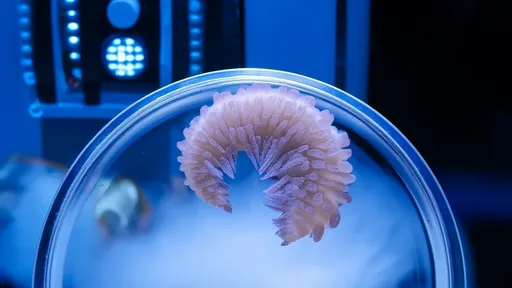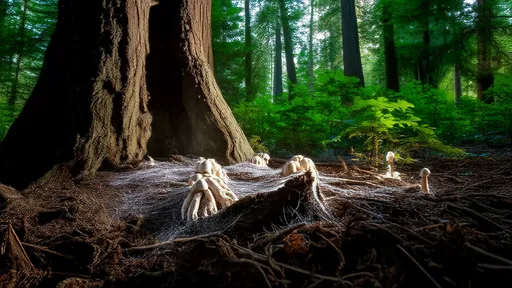In the ongoing battle against wildlife poaching, forensic scientists are turning to an unexpected ally: the very dirt beneath our feet. A groundbreaking technique analyzing environmental DNA (eDNA) from soil samples is revolutionizing how authorities track poachers across vast landscapes. This molecular detective work doesn’t just identify suspects—it reconstructs their movements with startling precision.
The concept seems ripped from science fiction, but the science is remarkably concrete. When humans or animals move through an environment, they shed countless skin cells, hair follicles, and other biological material. These microscopic traces persist in soil, carrying unique genetic signatures that can survive for weeks under proper conditions. Forensic ecologists now collect soil samples near carcasses or along suspected escape routes, extracting DNA that tells a vivid story of who passed by and when.
Traditional anti-poaching methods often rely on eyewitness accounts or unreliable physical evidence like footprints. What makes eDNA analysis revolutionary is its ability to place specific individuals at crime scenes even when no visible traces remain. A team working in South Africa’s Kruger National Park recently matched soil DNA to a known poacher who had eluded capture for three years—the genetic material clinging to his boots matched samples from multiple rhino killing sites.
The process begins with meticulous sample collection. Investigators use sterile tools to gather soil from locations showing signs of human activity: disturbed vegetation, makeshift campsites, or bloodstained earth near butchered animals. Control samples from surrounding areas help distinguish between normal environmental DNA and suspicious human or animal traces. Back in specialized labs, technicians employ polymerase chain reaction (PCR) techniques to amplify minute DNA fragments for analysis.
One surprising advantage of soil DNA is its durability compared to other forensic evidence. While fingerprints fade and hair degrades, genetic material bound to soil particles can remain detectable for extended periods, especially in cool, dry conditions. Researchers in Kenya successfully extracted poacher DNA from month-old samples during a recent elephant poaching investigation, leading to two convictions that would have been impossible with conventional evidence.
Beyond identifying individuals, eDNA profiling reveals intricate details about poaching operations. The presence of multiple genetic profiles suggests team activity, while DNA from different locations can map escape routes. In one groundbreaking case, soil analysis not only confirmed a suspect’s presence at a crime scene but revealed he had recently handled firearms and processed bushmeat—all from biochemical traces in the sampled dirt.
Challenges remain in making this technique universally applicable. Soil composition dramatically affects DNA preservation—acidic soils degrade genetic material faster, while clay-rich earth tends to preserve it. Researchers are developing stabilization protocols for different environments, with promising results from tropical rainforests to arid savannas. Another hurdle is cost; processing soil eDNA currently requires sophisticated equipment and trained geneticists, putting it out of reach for many wildlife agencies.
Legal systems are scrambling to adapt to this novel evidence type. While DNA analysis from blood or tissue is well-established in courts, soil-derived genetic evidence faces skepticism about potential contamination. Pioneering prosecutors now work closely with forensic teams to document strict chain-of-custody procedures, from sample collection to analysis. Several recent convictions suggest courts are increasingly accepting properly handled eDNA evidence.
The implications extend beyond poaching. Conservationists use similar methods to study endangered species populations by detecting their DNA in water sources. Some researchers speculate soil DNA could help solve historical wildlife crimes or identify trafficking routes by analyzing soil on seized contraband. As the technology becomes more accessible, it may transform how we protect vulnerable ecosystems worldwide.
Field agents report an unexpected psychological impact: poachers aware of soil DNA technology appear more hesitant to enter protected areas. Unlike camera traps that can be spotted and avoided, the invisible nature of genetic evidence creates pervasive uncertainty. Rangers in Zimbabwe have observed abandoned equipment at sites where eDNA collection signs were posted—a testament to the method’s deterrent potential.
Looking ahead, scientists aim to develop portable eDNA analyzers that could provide real-time results in the field. Current prototypes can process samples within hours, a dramatic improvement over laboratory turnaround times. Such devices would allow rangers to identify and pursue suspects before trails go cold, fundamentally changing the dynamics of anti-poaching operations.
This fusion of ecology and criminology represents a paradigm shift in wildlife protection. As one forensic specialist remarked while collecting soil near a butchered elephant, “The earth remembers what humans forget.” Each handful of dirt may hold the key to convicting those who profit from extinction—one genetic fragment at a time.

By /Aug 7, 2025

By /Aug 7, 2025

By /Aug 7, 2025

By /Aug 7, 2025

By /Aug 7, 2025

By /Aug 7, 2025

By /Aug 7, 2025

By /Aug 7, 2025

By /Aug 7, 2025

By /Aug 7, 2025

By /Aug 7, 2025

By /Aug 7, 2025

By /Aug 7, 2025

By /Aug 7, 2025

By /Aug 7, 2025

By /Aug 7, 2025

By /Aug 7, 2025

By /Aug 7, 2025

By /Aug 7, 2025

By /Aug 7, 2025